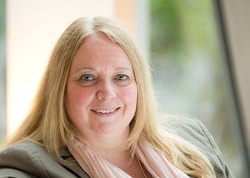Diversity – farewell to monoculture in companies
Table of Contents
New problems require new solutions
Diversity can only succeed without stereotypes
Addressing complex problems with diversity
The whole is more than the sum of its parts
Recruiting sets the first course for more diversity
Diversity as a quality feature of teams and project groups
Diversity needs visibility and new narratives
The new working world benefits from diversity management
Conclusion
Standards have long been the be-all and end-all in organisations, helping to simplify complexity and supporting the ambitious drive for efficiency. But as complexity increases, the benefits diminish, because artificial simplification overlooks too much and the pure focus on efficiency makes you lose sight of the essentials. It is time to readjust. Diversity in teams, boards and committees, in thinking and acting is becoming increasingly important.
New problems require new solutions
In a crisis, people automatically fall back on experiences and solution patterns anchored in their biography. In crises, organisations often react by first seeking quick solutions in the form of new actions that are rarely sustainable. Sometimes, multiple restructurings follow and processes are redefined in the hope of managing change. Here, too, one falls back on known, (supposedly) proven procedures.
For example, the Corona crisis clearly showed how strongly old clichés and gender roles are still anchored in all areas of our society. As a result, women took on the greater part of the burden, as they are more often than average employed in system-relevant occupations1, where performance expectations and burdens have risen sharply during the pandemic. At the same time, it was predominantly women who, as is self-evident, also provided childcare after the elimination of day-care and attendance lessons at school. In addition, many more women than men reduced their working hours (temporarily?)2, which on the one hand aggravated the crisis in the systemically important occupations and on the other hand disadvantages for the persons concerned in terms of later retirement and possible career advancement. However, the measures taken by politicians to cope with the Corona crisis, as well as those in companies and families, have tacitly assumed that women would serve their role stereotype and selflessly, caringly and uncomplainingly fulfil the expectations placed in them. No wonder, since the relevant decisions were made in male-dominated committees. The massive disadvantages and consequences for women were not considered in these homogeneous rounds, let alone absorbed. Thanks to unconscious bias, the decision-makers may not even have been fully aware of them. But that doesn’t make it any better: if men and women increasingly revert to old role patterns under the pressure of the crisis, this also means a step backwards for equality and diversity.
However, it is precisely in times of crisis that old patterns of thought and behaviour do not fit into new situations never experienced before. New solutions can only be found if the perspective is broad and the decision-making body is composed of as diverse a group as possible. Only in this way can we counteract the above-mentioned automatism in thinking and open our eyes to new approaches.
Diversity can only succeed without stereotypes
This is why the solution for more equality between men and women does not lie in measures for the promotion of women or a better reconciliation of family and work. For both approaches imply deficits among women and build on old role stereotypes: Women are primarily responsible for family tasks such as children and care, they just need to organise themselves better. This is often only at the expense of women’s professional wishes and developments (and, by the way, also at the expense of many modern thinking men) – and also at the expense of the innovative power, solution and survival ability of companies and society. After all, the problem actually lies in the monoculture of thinking and acting, in other words in the system based on traditional basic assumptions and role models.
Such stereotypes exist for many social groups fighting for their equality: According to these stereotypes, women are primarily responsible for the family and men are career makers with less emotional intelligence. Older employees within the company are considered to be inflexible, no longer able to learn, or even no longer willing to perform. Employees with disabilities are seen as proof of the company’s social commitment, but are not otherwise considered to bring demonstrable added value. People with dark skin colour are automatically assumed not to speak the German language and to be petitioners or criminals in our society. Muslims with headscarves are generally considered to be immature, heteronomous and therefore non-independent, etc. And those who do not correspond to their role cliché are quickly regarded as bitchy, emancipated, quotas-XY, annoying, pushy, rebellious or frustrated, and are thus degraded in reputation and credibility and at the same time discouraged. The system maintains itself. None of these groups is homogeneous. All of them have a variety of facets, which are an enrichment for teams and organisations and, by the way, also represent a cross-section of the population, i.e. customer groups. Far too seldom are clichés made conscious and specifically questioned, prejudices reflected and discrimination punished. We repeatedly fall into the trap of the supposedly “normal”, pigeonhole thinking. But those who only fill their thoughts from existing drawers will never have a flash of inspiration. Without an initial spark, there is no innovation.
Addressing complex problems with diversity
Binary thinking in the sense of thinking in pairs of opposites is innate to us: yes/no, right/wrong, friend/enemy. This originally simplified and accelerated the processing of information and the making of decisions: Threat situation? Escape or attack? Stress situations that require an immediate reaction.
In our increasingly complex and often stressful world, however, this archaic way of thinking becomes a boomerang. For complexity cannot actually be reduced by this, but only seemingly simplified by a narrow focus. One can see a small section clearly, but hides the rest. This then quickly leads to unfavourable or wrong decisions.
Ashby’s Law3 says: Simple systems and challenges can be kept under control with simple means, complex systems and problems require complex measures. A system is determined by variety. The greater the variety of a system, the more possibilities it has to act, communicate and influence its environment, and the more it can reduce the variety of its environment through control. Conversely, absorbed variety leads to limited action. A control system (e.g. decision-making body plus decision-making process) should therefore have at least as much variety as the system to be controlled (e.g. project team, department, organisation) or the problem to be solved (e.g. maintaining work processes during the corona crisis). It would be even better to have a larger, growing variety in order to be able to control effectively in the long term.4
The complexity of our living environment can therefore only be effectively countered by equally complex structures. Diversity is an essential part of this, as it broadens and enriches our perspective. In May 2020, a McKinsey study on the “Connection between diversity and business success” came to the conclusion that mixed management teams are crucial, especially in times of crisis. It’s not about the number of representatives from different groups, but about how openly different voices are heard and unexpected questions are asked. In other words, an inclusive culture determines added value and business success.5 The study thus confirms the validity of Ashby’s Law from 1956, which is still valid today.
The study also acknowledges that while a heterogeneous group may take longer to exchange views and ideas, it also makes better decisions that take into account the different facets of the problem and the people involved on a much larger scale. This results not only in a better awareness of problems and solutions and more creativity and innovation, but also in greater customer orientation and satisfaction.
The whole is more than the sum of its parts
People in homogeneous groups often tend to compare themselves with others (e.g. better/worse). This leads to hierarchical thinking combined with a destructive comparison spiral of dissatisfaction, reduced self-confidence, competitive thinking, envy and resentment, and is thus at the expense of team performance. People in heterogeneous, diversity welcoming groups are much less inclined to do so – it is no longer a question of “better” but of “different” in the positive sense, of “both-as-well-as”. Effective and value-creating cooperation in a team requires security. For heterogeneous teams, special attention is paid to psychological security, i.e. an inclusive culture in which everyone is heard and no one has to be afraid of discrimination and disadvantage. This creates a different dynamic of participation, which has a positive effect on group mood and productivity. The whole is more than the sum of its parts, and the added value of diversity is thus clearly visible.
Recruiting sets the first course for more diversity
A high level of responsibility for diversity in the company is borne by the human resources department in the recruiting process, because this is where the course is set. However, applicants who are not male, white with a German passport and a maximum age of 35 years often need extra arguments why they should be hired for attractive positions, as if they still have to provide a bonus. This is not only due to the well-known effect that we like to surround ourselves with people who are similar to us, but simply to pigeonhole thinking. That’s why companies are increasingly turning to letting teams have a say in deciding who is to be a new team member. This broadens the view and ensures a better fit. However, it does not automatically lead to greater diversity and active inclusion, because this is also a question of the system, for example who is heard in the company and how decisions are made.
If teams or committees are deliberately diverse, only the first step is taken. Basic assumptions and stereotypes have to be questioned again and again and made aware of the unconscious bias – an ongoing process. This requires time and a willingness to reflect and at the same time tolerance of frustration and the ability to deal with conflict. That is why we need leaders today who bring these skills with them, promote new thinking and action, and are also willing to learn.
Diversity as a quality feature of teams and project groups
People with different personality traits – external such as gender, age, origin, skin colour as well as internal (e.g. individual attitude, life experiences, beliefs, thought and behaviour patterns, preferences) – play an important role in working with and in project teams and working groups. Often it is exactly those characteristics that can be relevant in project or team work to achieve a goal, such as professional experience, knowledge, skills, position/role and network.
In project work, it can make sense to involve employees whose education and experience are not familiar with the project topic itself, but whose way of thinking, approach and personal background enrich the project.
But the existing diversity can only be used in the project or team if an open, collegial exchange is possible and the team members are aware of these differences and their positive effects. Team and project leaders should pay attention to a balance between on the one hand looking at what they have in common, what unites them (goals, values, vision, sense of we) and on the other hand visibility and emphasis on the differences.
Diversity needs visibility and new narratives
Diversity needs increased visibility, because people follow people. If, for example, a job advertisement shows women in the picture, even in supposedly male professions, the number of women applying increases, while the number of male applicants remains the same. The “Scully effect” is well known: When Gillian Andersen appeared in the popular TV series “The X-Files” in the early 1990s in the role of the scientist Scully, interest in STEM professions increased significantly among young female viewers. A similar development was also observed in other TV series. Only what you see takes place, and especially the visual language is powerful.
In order to be seen as normal, everyday and taken for granted, diversity needs a greater presence in all areas of life and on all communication channels. That is why we should show and tell a lot of it, to replace old, stereotypical role models with new narratives.
The new working world benefits from diversity management
Diversity management makes a contribution to this. The consulting and organisational development team Erika Lüthi/ Hans Oberpriller understands this to mean “the active and creative examination of the diversity of differences and similarities and their appreciation as potential for an organisation”. The task of diversity management is therefore to promote
- developing and promoting a common identity for the organisation, and
- anchoring the principle of diversity potential in all corporate processes in order to make the differences between individuals and identity groups usable as a strategic resource for solving complex problems.6
To this end, an awareness of differences, similarities and affinities among company management, executives and employees must be awakened and actively cultivated within the organisation. Only if the learning and development opportunities inherent in diversity are seen, will they become usable. Diversity management is therefore above all awareness raising and thus becomes a pillar of the basic culture in the company.
The idea of diversity is not only aimed at the composition of teams and committees. It is just as important to be able to let different ideas and opinions stand side by side, to allow different solutions to the same problem to run parallel (e.g. regulations on working hours and place of work, part-time, etc.) and to be open to different methods and tools. One solution, one standard for all – that was yesterday.
Conclusion
When complexity is high, it is counterproductive to strive for more stability, even though the need may be great. What is required is greater flexibility and adaptability as a basis for dynamic robustness in order to be able to continue to exist.
Diversity is therefore not a “nice-to-have”. It is a necessity if the world of work is to become “Working World 4.0” and companies are exploring the possibilities and opportunities of agile transformation. Both development trends are reactions to the rapidly growing complexity of our world due to globalisation and digitalisation and to the noticeable change in values among people. The organisations that will be most successful in this respect are those that live the idea of diversity early on, both in the composition of their workforce and decision-making bodies and in their thinking and behaviour.
Notes:
[1] See Federal Statistical Office “Proportion of employees subject to social insurance contributions by economic sector” of 30.06.2019
[2] See study by the Hans Böckler Foundation June 2020: Coronakrise verschärft soziale Ungleichheit
[3] See W.R. Ashby: An introduction to Cybernetics. Wiley, New York 1956
[4] See Zollondz, Ketting, Pfundtner (eds.) “Lexikon Qualitätamanagement: Handbuch des Modernen Managements” 2019, p. 55
[5] See McKinsey study “Connection between diversity and business success” of 19.05.2020 https://www.mckinsey.de/news/presse/2020-05-19-diversity-wins
[6] See Lüthi Erika / Oberpriller Hans / Loose Anke / Orths Stephan: Team development with diversity management, method exercises and tools, Haupt Verlag, 3rd edition 2013.
Birgit Schiche has published further articles in the t2informatik Blog, including

Birgit Schiche
Birgit Schiche was a manager herself for a long time before she decided on a different career path. As a change management consultant at Daimler and later as a senior consultant at a Hamburg-based management consultancy, she began supporting organisations and managers in change processes. As a consultant and coach with “Plan B. Schiche – Personalstrategie & Führung”, she worked from 2010 as a pioneer for a new working world.
In the meantime, she has been doing this work part-time, while in her main job she is now strategically building up the Learning & Development department in a rapidly and also internationally growing company. Her principle: Even the smallest steps towards change are worthwhile – the main thing is to get things moving. Communication and an understanding of leadership are key factors.

